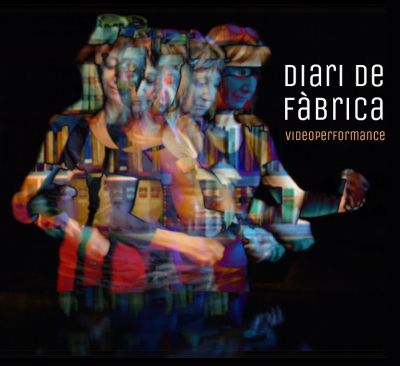MARTA AZPARREN
Diario de fábrica
An audio-visual project (video + audio-visual performance) conceived as a critical reflection upon the imprint of industrial work upon artistic activity, cross-connecting Roberto Rossellini's perspective in "Europe '51", with the insight of Simone Weil, and her description of Fordist work in «Factory Journal».
The character Irene Gerard, played by Ingrid Bergman, appears in the film "Europe '51", an upper middle class woman on a spiritual quest after the suicide of her youngest son. Due to a chain of circumstances, she is forced to work in a factory, where she faces a long day on an assembly line. Based on this premise, and on texts written by Rosselini about factory labour in which he describes with extreme detail each and every one of the mechanical processes of her work, her remuneration and assembly line labour, Marta Azparren begins an investigation on cultural work and art, in relation to gestural repetition and loops.
Marta understands art as work, more precisely as a Japanese-style strike (i.e., a Spanish urban legend, based on the belief that Japanese workers strike by working twice as hard, in order to ruin the factory through overproduction), as described by Remedios Zafra and Hyto Steyerl, or production as a show, similar to the post-Fordist assembly-line "nose-to-the-grindstone" conveyor belt; work that is, at the same time, performed with enthusiasm, hyperactivity, and a profound sense of commitment, an emotional task achieved at breakneck speed. Apart from housework and care-giving, art is the one industry with the largest quantity of unpaid working hours. Free labour and rampant exploitation are the dark matter that maintains the cultural sector. During her residency at La Escocesa, Marta conducted various interviews with a number of artists in residence and former workers from La Escocesa who talked about the factory, with the aim of recording an audiovisual piece in which the repetitive gestures of their work are collected.
Oihana García Acín, architect, is one of the interviewees, and with her, Marta talked about the reconversion of industrial spaces, industrial archaeologies, culture, and the position of the artist in the process of gentrification. With Lidia Ortega, a former textile factory worker from the 70s, she looked back upon life in factories during the post-Franco regime; her own personal experience, and the experiences of the women in the factory. She also talked to Juan Francisco Segura, resident artist and founder of La Escocesa, who explained the beginnings of converting the factory into a creative space, sharing a perspective on the previous work in the factory with its former workers, with the social class of the artist, with the peripheries, with the old materials found in the factory and their reuse for artistic creation. And finally, she talked to Antonia Márquez, a former worker in a factory which made parts for motor cars, who told her about her experience of a lifetime of assembly line work.
After these conversations, Marta recorded the repeated gestures which remained in the memory of the interviewees from their time in the factory. The recordings were video loop samples, with the gestures replaying. Apart from the memorised gestures, Marta also contacted the Asamblea de Cooperación por la Paz /Cooperation Assembly for Peace, an NGO with projects in Tangier and Tunisia, to record women who work or who once worked in textile factories, making videos in which they repeated the gestures of their respective assembly line jobs, some of them for Spanish textile brands; the delocalised periphery. At the end of her residency at La Escocesa, Marta Azparren realised an interactive online presentation, in which all members of the Art and Territory network participated.
Marta Azparren. Visual artist and performer based in Barcelona. Her videos have been screened and awarded in numerous international film and video festivals, exhibitions and art festivals. Her work is a meta-reflective statement on artistic activity, paying special attention to the connections between creator, spectator and object, and their mediators.






VIDEO ART AND TERRITORY
Idensitat has created an audiovisual piece collecting interviews with participants in this project, from people in the organisation itself to those artists selected in the open call. This video functions both as documentary material, and at the same time as a device for critical reflection and research on the subject of "the transperiphery" and artistic residencies as a working methodology.